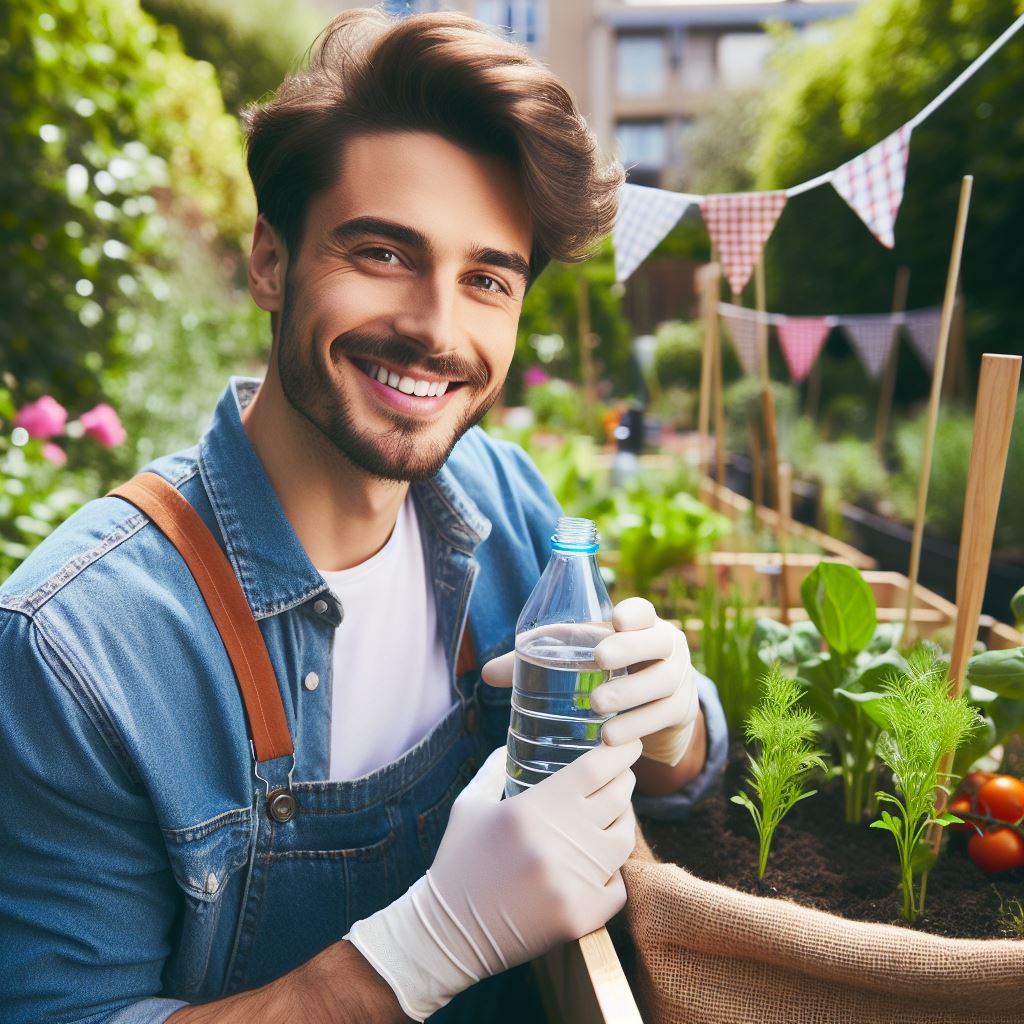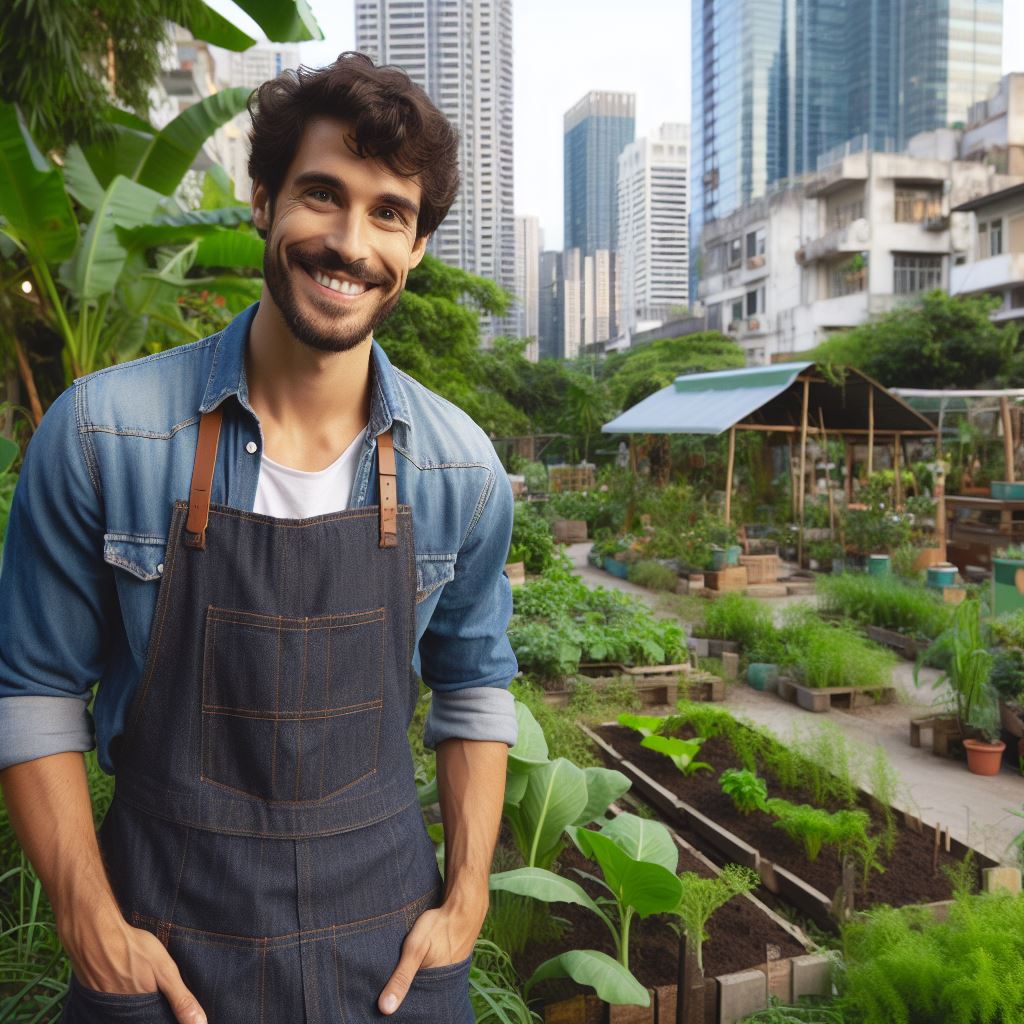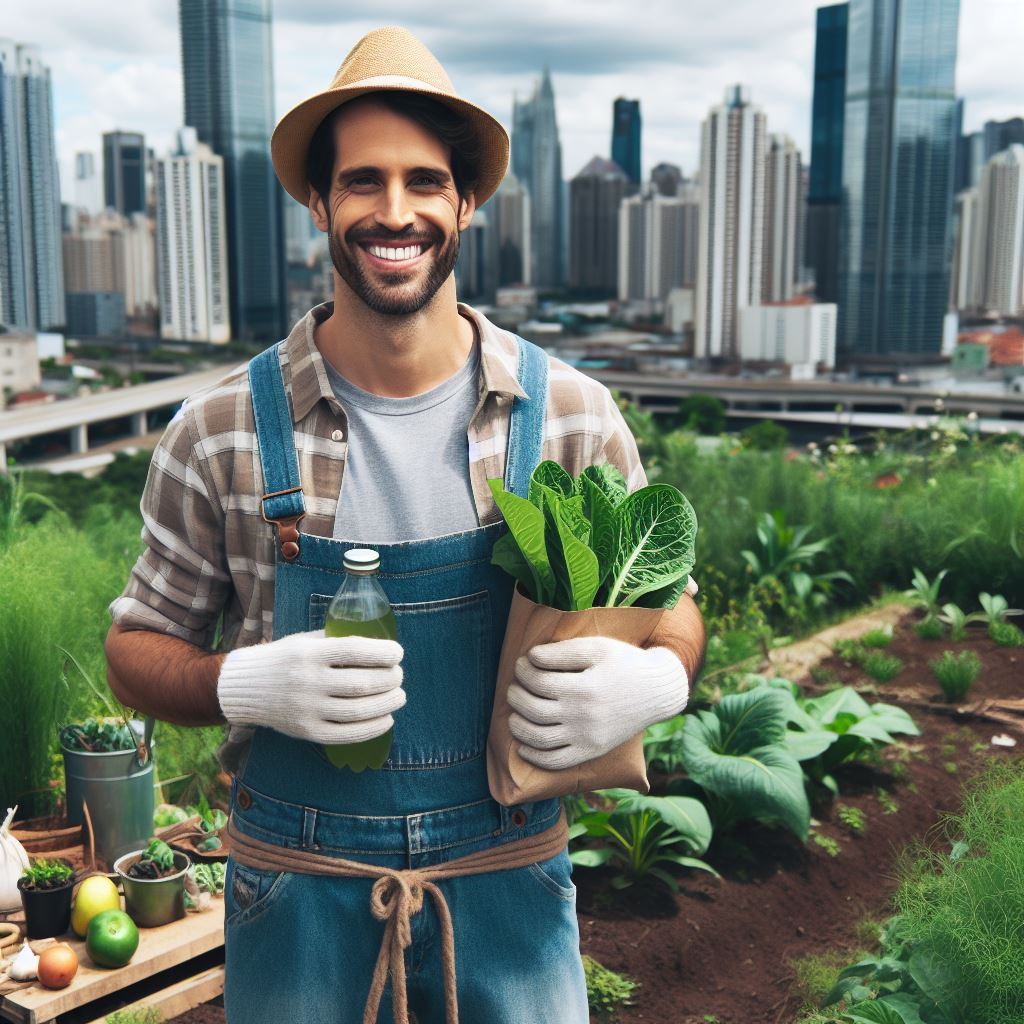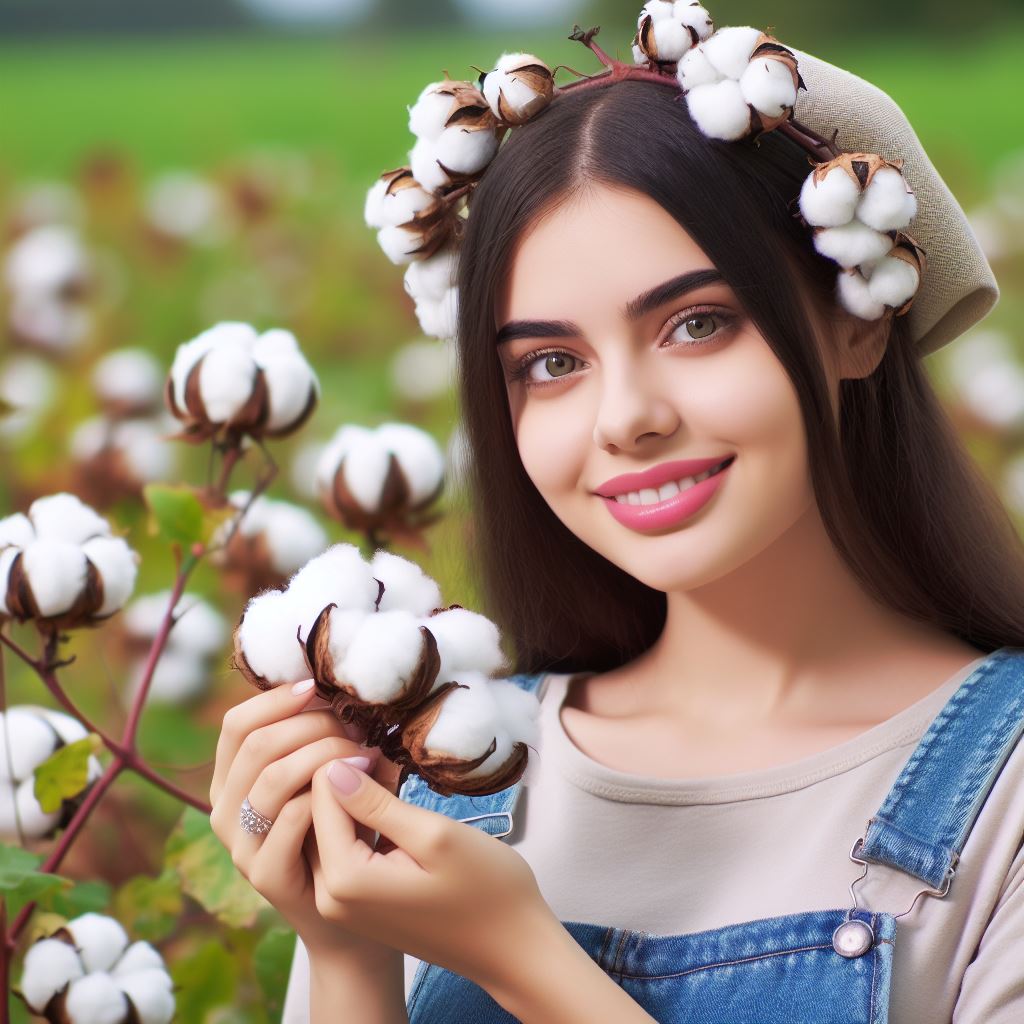Introduction
Artists have traditionally been associated with urban environments, but their presence on farms brings a refreshing perspective.
These creative minds can utilize their artistic skills to enhance various aspects of agricultural practices.
Their expertise in design, aesthetics, and storytelling can transform farms into visually appealing and engaging spaces.
Artists can create captivating murals, sculptures, or installations that communicate the narrative and values of the farm.
These art forms not only beautify the surroundings but also serve as educational tools for visitors and employees.
Moreover, artists can contribute to the sustainability efforts of farms by repurposing materials or incorporating eco-friendly techniques.
They can utilize recycled items to create innovative artworks or provide suggestions for sustainable farming practices.
With their ability to think outside the box, artists can also develop unique marketing strategies to promote farm products.
By collaborating with farmers, they can create compelling branding and packaging that differentiate the farm’s products in the market.
In summary, the presence of artists on farms adds immense value to the agricultural industry.
Their creativity and innovative thinking can enhance the visual appeal, sustainability, and marketing efforts of farms.
Through this blog post, we aim to shed light on the importance of artists in agricultural settings and the positive impact they can make.
Artists on Farms: A Growing Trend
The increasing presence of artists on farms
- Artists from various disciplines are increasingly finding inspiration and solace in agricultural settings.
- Painters, sculptors, photographers, writers, and musicians are venturing out of their studios and onto farms.
- This trend is not limited to a specific geographical area and can be observed globally.
- Artists on farms bring a fresh perspective to the agricultural world, offering new insights and interpretations.
Examples of different types of artists involved in agricultural settings
- Visual artists: These include painters who capture the beauty of nature, sculptors who create installations using natural materials found on farms, and photographers who document the daily life of farmers.
- Writers: Many authors and poets are drawn to the tranquility and simplicity of farm life, using it as a backdrop for their literary works.
- Musicians: Music has the power to evoke emotions, and musicians often find inspiration in the rhythms and sounds of the farm, incorporating them into their compositions.
Reasons behind the trend
- Connection to nature: Artists on farms find a deep connection with the natural world, which serves as a muse for their creative endeavors.
- Escape from urban chaos: Farms provide a serene environment where artists can temporarily escape the hustle and bustle of city life.
- Collaboration opportunities: Artists and farmers can collaborate to create unique projects that fuse art and agriculture, bringing attention to sustainable practices and local food systems.
- Preservation of rural landscapes: Artists on farms often contribute to the preservation and promotion of rural landscapes, ensuring their beauty is appreciated for generations to come.
- Education and awareness: Artists can use their work to educate the public about the importance of agriculture, sustainability, and the challenges faced by farmers.
Basically, the increasing presence of artists on farms is a growing trend that brings together two seemingly disparate worlds.
Artists from various disciplines are venturing out into agricultural settings to find inspiration, connect with nature, and contribute to the preservation of rural landscapes.
By collaborating with farmers and using their creative abilities, artists can play a crucial role in raising awareness about the importance of agriculture and sustainable practices.
This trend not only benefits the artists themselves but also stimulates dialogue and appreciation for the vital role of farming in our society.
Read: The Apple Orchard: Seasons of Hardship
Benefits of Having Artists on Farms
Environmental awareness and sustainable practices
- Artists on farms can bring a heightened sense of environmental awareness through their creative expressions.
- They can use their art to depict the beauty of nature and the need to protect it.
- By incorporating sustainable materials into their artwork, artists can inspire the adoption of eco-friendly practices on the farm.
- Through their artwork, artists can highlight the importance of organic farming and conservation of natural resources.
- The presence of artists on farms can encourage farmers to explore more sustainable farming methods, such as permaculture or agroforestry.
Promoting agricultural education and appreciation
- Artists can use their creativity to educate visitors about the farming process and the significance of agriculture.
- Through their artwork, artists can showcase the hard work, innovation, and dedication of farmers.
- They can help bridge the gap between urban and rural communities by highlighting the importance of agriculture in everyone’s lives.
- Artists can conduct workshops or classes to teach others about the connection between art, food, and farming.
- The presence of artists on farms can inspire others to appreciate the intricacies of farming and the value of locally grown produce.
Revitalizing rural communities
- Artists on farms can bring new energy and creativity to rural communities.
- They can create art installations or murals that beautify the landscape and attract visitors.
- By hosting art events or festivals, farms can become cultural hubs and bring economic benefits to local businesses.
- The collaboration between artists and farmers can create a sense of community pride and identity.
- Farm owners can partner with artists to develop agritourism opportunities, stimulating the local economy.
Creating a unique farm experience for visitors
- The presence of artists on farms provides visitors with a multi-dimensional experience.
- Artists can create interactive art installations or sculptures that allow visitors to engage with the farm environment.
- Farm tours can be enhanced by the inclusion of art displays, performances, or workshops.
- Visitors can witness the creative process firsthand, gaining a deeper appreciation for both art and agriculture.
- The combination of art and farming creates a memorable and unique experience that sets farms apart from traditional tourist destinations.
In essence, having artists on farms brings a multitude of benefits.
They can promote environmental awareness, educate about agriculture, revitalize rural communities, and create unique farm experiences for visitors.
The integration of art and farming not only enriches the cultural landscape but also fosters a deeper connection between humans, nature, and food production.
By harnessing the creative powers of artists, farms can thrive as vibrant and sustainable spaces of inspiration and innovation.
Read: Fields of Green: A Young Farmer Tale
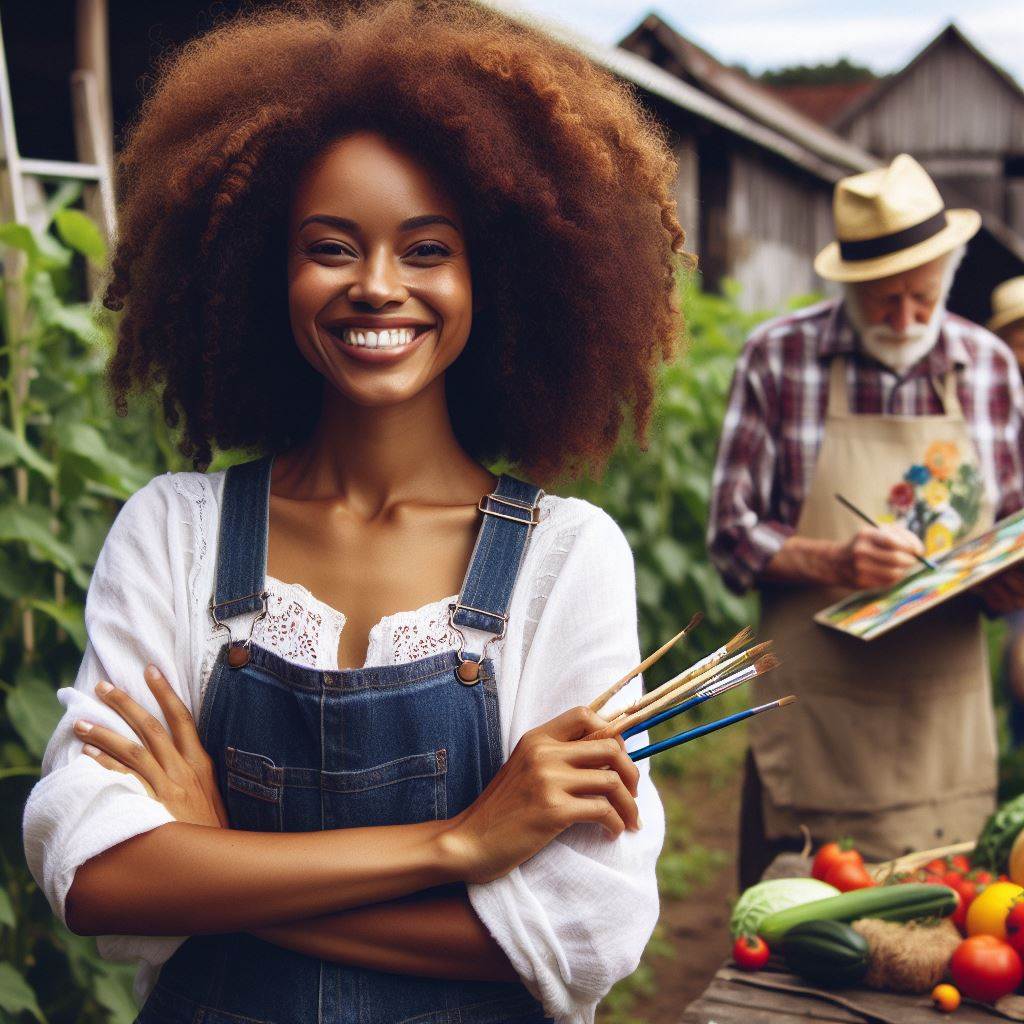
Artist Residencies on Farms
What artist residencies are
- Artist residencies provide artists with a dedicated space and time to work on their creative projects.
- These programs offer artists an opportunity to immerse themselves in a new environment and find inspiration.
- Residencies can vary in length, from a few weeks to several months, depending on the program.
- Artists are often provided with accommodation, studio space, and sometimes even meals during their stay.
- The goal of artist residencies is to support and nurture artistic creation and provide a conducive environment for artists to develop their practice.
Overview of various farm-based artist residency programs
- Farm-based artist residencies combine the benefits of a traditional residency with the unique setting of a farm.
- These programs aim to connect artists with nature, agriculture, and rural communities.
- Farms offer artists a different perspective, allowing them to explore themes of sustainability and environmental stewardship.
- Many farm-based residencies provide opportunities for artists to engage with the local community through workshops or exhibitions.
- Some programs focus on specific art forms, such as painting, sculpture, or photography, while others embrace a wide range of disciplines.
Success stories and impact of artist residencies on farms
- Artist residencies on farms have led to significant creative breakthroughs for many artists.
- The exposure to a new environment and the influence of nature have inspired artists to create unique and thought-provoking works.
- Residencies offer artists the freedom to experiment and take risks in their artistic practice.
- Collaborations between artists and farmers have resulted in innovative projects that bridge the gap between art and agriculture.
- These residencies also foster a sense of community and create opportunities for cultural exchange and dialogue.
- The presence of artists on farms often brings attention to important issues, such as sustainable farming practices or rural development.
- Residents often develop a deep appreciation for the land and the people who work on it, leading to a more profound understanding of the agricultural world.
In fact, artist residencies on farms provide a unique and enriching experience for both artists and rural communities.
These programs allow artists to explore new ideas, find inspiration in nature, and engage with the local community.
The impact of these residencies extends beyond the artistic realm, contributing to the promotion of sustainable practices and cultural exchange.
By creating a space for creativity to flourish, farm-based artist residencies play a crucial role in nurturing the arts and fostering a deeper connection to the land.
Read: Cattle Trails: A Rancher Life and Work
Collaboration Opportunities for Farmers and Artists
Collaboration between farmers and artists opens up new possibilities for both parties involved.
It allows artists to explore different creative avenues and helps farmers bring a unique perspective to their work.
While there are numerous benefits to such collaborations, there are also some challenges that need to be considered.
Let’s delve deeper into this topic and look at examples of successful collaborations:
Exploring the possibilities of collaboration between farmers and artists
- Farmers and artists can collaborate to create art installations on farms, incorporating elements of nature and agriculture.
- Artists can use agricultural spaces as creative studios, immersing themselves in the environment for inspiration.
- Farmers can provide artists with materials and resources, such as organic produce or natural dyes, for their artistic projects.
- Artists can educate farmers about various art forms and techniques, fostering a deeper appreciation for creativity.
- Farmers and artists can collaborate on community events, organizing farm tours combined with art exhibitions or performances.
Benefits and challenges of such collaborations
- Collaborations enable artists to step out of their traditional studio spaces and interact with the natural world.
- Farmers gain exposure to different artistic perspectives, encouraging innovative approaches to their agricultural practices.
- Such collaborations create opportunities for cross-pollination of ideas, leading to the emergence of unique artistic and farming techniques.
- However, challenges may arise due to differences in schedules, communication barriers, or conflicting work methods.
- Artists and farmers must find ways to bridge these gaps and maintain effective collaboration for successful outcomes.
Examples of successful collaborations between farmers and artists
- The Rural Arts and Culture Map project in the United States connects artists with rural communities, fostering collaborations centered around local farming.
- The “Farm-to-Canvas” initiative in the United Kingdom brings together artists and farmers to create artwork inspired by the landscape and agricultural practices.
- In France, the “Artistes a la Ferme” program organizes residencies for artists on farms, allowing them to work alongside farmers and create site-specific artworks.
- “Harvestworks” in New York City brings together artists, farmers, and technologists, exploring the intersection of art, farming, and technology.
- The “Farm Art D.Tour” in Australia combines art installations and performances with agricultural experiences, attracting both locals and tourists.
In short, collaboration between farmers and artists presents exciting opportunities for exploration, learning, and creativity.
The benefits of such collaborations include the infusion of artistic perspectives into farming practices and the inspiration farmers gain from artists.
However, challenges must be overcome through effective communication and understanding.
The examples provided demonstrate the successful outcomes that can arise from these collaborations, showcasing the potential for artistic and agricultural innovation.
Read: From Seeds to Success: An Organic Farmer
Case Study: Artist’s Experience on a Farm
Interview or Narrative of an Artist Who Has Worked on a Farm
During my research, I had the pleasure of interviewing Sarah, a talented artist who spent a summer working on a farm.
Sarah volunteered on the farm to reconnect with nature and explore the relationship between art and agriculture.
Sarah initially considered her time on the farm as an opportunity to escape the hustle and bustle of city life.
She was tired of the fast-paced art scene and craved a slower, more connected way of living.
Little did she know that this experience would immensely impact her perspective both as an artist and as an individual.
Working on a farm opened Sarah’s eyes to the immense beauty and significance of the natural world.
She found inspiration in the vibrant colors of blooming flowers, the rhythmic movements of the animals, and the serene landscapes that surrounded her.
The farm became her new canvas, and she started incorporating elements of the rural environment into her artwork.
Transform Your Agribusiness
Unlock your farm's potential with expert advice tailored to your needs. Get actionable steps that drive real results.
Get StartedInsight into the Artist’s Perspective on Working in an Agricultural Setting
Sarah’s time on the farm allowed her to witness the hard work and dedication of the farmers.
She observed the intricate relationship between humans, animals, and the land, which evoked a deep sense of respect and admiration.
This newfound perspective translated into her art, where she aimed to depict the harmony between humanity and nature.
The farm also provided Sarah with a sense of community she had not experienced before.
The farmers welcomed her with open arms, patiently teaching her about their trade and sharing stories of their daily struggles and triumphs.
This sense of belonging and connection inspired Sarah to create artwork that would honor the farmers’ invaluable contributions to society.
Lessons Learned and Personal Growth Through the Experience
Sarah’s time on the farm taught her invaluable life lessons.
She learned the importance of hard work, patience, and resilience.
She witnessed firsthand the constant battle against unpredictable weather conditions and the perseverance required to cultivate the land.
These lessons not only shaped her artistic technique but also influenced her approach to life.
Moreover, Sarah developed a deep appreciation for the food she consumed.
Witnessing the process from farm to table made her realize the labor and love that goes into every meal.
This newfound awareness inspired her to advocate for sustainable agriculture and explore the connections between art, agriculture, and food security.
In general, Sarah’s experience on the farm was a transformative journey that allowed her to reconnect with nature, gain a new perspective on the agricultural world, and grow both as an artist and an individual.
Her artwork now reflects the deep connection she established with the farming community and her unwavering commitment to celebrating the beauty of the natural world.
Conclusion
Artists on farms play a crucial role in promoting creativity, sustainability, and community engagement.
Farmers and artists should actively seek collaborations to bring together their unique skills and perspectives.
Embracing collaborations between farmers and artists can lead to innovative solutions and a deeper connection to the land.
In review, the presence of artists on farms is not only beneficial but necessary for the growth and development of sustainable agriculture.
Artists bring a new perspective to farming practices, challenging traditional norms and inspiring creativity in farmers.
By embracing collaborations, farmers and artists can combine their skills and knowledge to find innovative solutions to agricultural challenges.
Through their work, artists can also help create a sense of community and connection to the land, reminding us of the importance of sustainable practices.
As the boundaries between art and agriculture blur, it is essential for both farmers and artists to embrace these collaborations and recognize the mutually beneficial outcomes that can arise.
Together, they can create a thriving and sustainable future for both the arts and agriculture.

